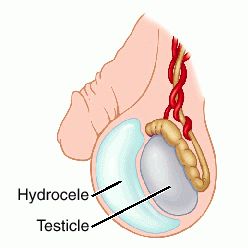HYDROCELE
A hydrocele is a collection of clear fluid around the testicle.Under a general anaesthetic, a small cut is made in the scrotal skin and the testicle and the surrounding fluid sac (the hydrocele) are gentlydelivered through the cut. The front of the sac is opened, the fluid drained and the testicle examined. The excess tissue of the sac is cut away and the remaining fringe of the sac is turned inside out behind the testicle and the edges sewn together to prevent the sac re-forming.Any bleeding is stopped, the testicle is placed back inside the scrotum And the skin closed with an absorbable, hidden stitch. A drain tube might be inserted into the scrotum after the operation to drain any access fluid or blood. The tube will be removed after 1 / 2 days.
RISKS
These are the commoner risks. There may be other unusual risks that have not been listed here. Please ask you surgeon if you have any general or specific concerns.
There are risks associated with any anaesthetic.
You may have side effects from any drugs used. The commoner side effects include light-headedness, nausea, skin rash and constipation.
The correction of a hydrocele has the following specific risks and limitations:
- You may have some bruising and / or swelling of the scrotum, which occasionally may appear considerable if the hydrocele was very large. This usually gets better over several days or weeks, depending on its size.
- Occasionally your wound may become red or tender due to infection. If this happens you may need antibiotic treatment.
- You may notice some aching or discomfort in the wound that may take up to six months to settle.
- You may have some numbness of the skin around the wound, which may improve over several months.
- You may notice some irregularity or “lumpiness” around the testicle, which may persist.
Some of the above risks are more likely if you smoke, are overweight, diabetic, have high blood pressure or have had previous heart disease.
